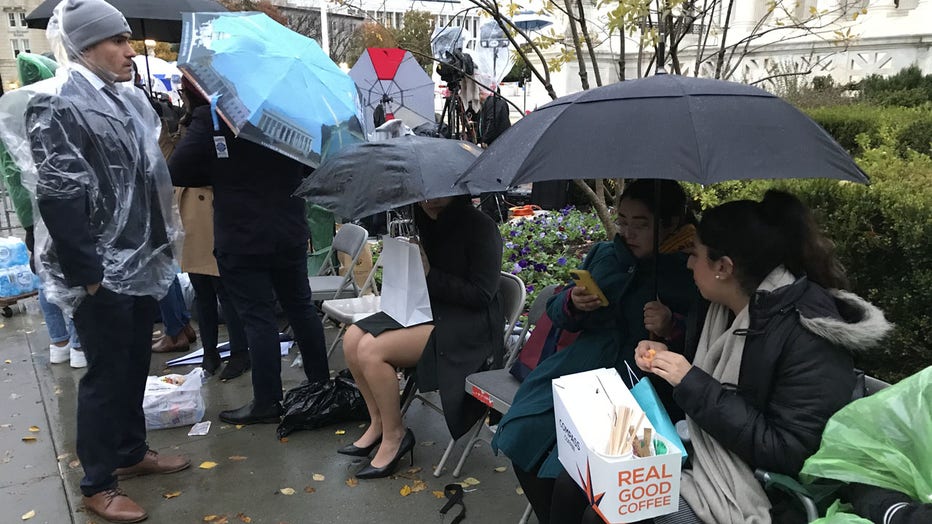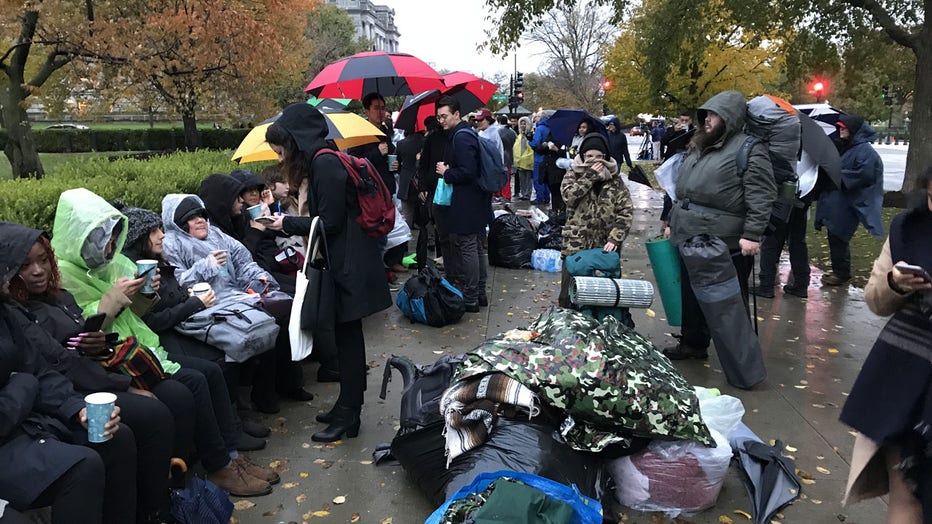Protections for 660,000 immigrants are on the line at the Supreme Court
Crowds outside of the U.S. Supreme Court Building in Washington, D.C. on Tuesday, November 12. Justices are hearing arguments on the Trump administration's bid to end DACA, which shields immigrants brought to the U.S. as children from deportation. (B
WASHINGTON - (AP) -- Protections for 660,000 immigrants are on the line at the Supreme Court.
The justices are hearing arguments Tuesday on the Trump administration's bid to end the Deferred Action for Childhood Arrivals program that shields immigrants brought to the U.S. as children from deportation and allows them to work in the United States legally.
The program was begun under President Barack Obama. The Trump administration announced in September 2017 that it would end DACA protections, but lower federal courts have stepped in to keep the program alive.
Now it's up to the Supreme Court to say whether the way the administration has gone about trying to wind down DACA complies with federal law.
A decision is expected by June 2020, amid the presidential election campaign.
Some DACA recipients who are part of the lawsuit are expected to be in the courtroom for the arguments. People have been camping out in front of the court since the weekend for a chance to grab some of the few seats that are available to the general public. Chief Justice John Roberts has rejected a request for live or same-day audio of the arguments. The court will post the audio on its website .

Crowds outside of the U.S. Supreme Court Building in Washington, D.C. on Tuesday, November 12. Justices are hearing arguments on the Trump administration's bid to end DACA, which shields immigrants brought to the U.S. as children from deportation. (B
A second case being argued Tuesday tests whether the parents of a Mexican teenager who was killed by a U.S. border patrol agent in a shooting across the southern border in El Paso, Texas, can sue the agent in American courts.
If the court agrees with the administration in the DACA case, Congress could put the program on surer legal footing. But the absence of comprehensive immigration reform from Congress is what prompted Obama to create DACA in 2012, giving people two-year renewable reprieves from the threat of deportation while also allowing them to work.
Federal courts struck down an expansion of DACA and the creation of similar protections for undocumented immigrants whose children are U.S. citizens.
Trump's anti-immigrant rhetoric was a key part of his presidential campaign in 2016, and his administration pointed to the invalidation of the expansion and the threat of a lawsuit against DACA by Texas and other Republican-led states as reasons to bring the program to a halt.

Crowds outside of the U.S. Supreme Court Building in Washington, D.C. on Tuesday, November 12. Justices are hearing arguments on the Trump administration's bid to end DACA, which shields immigrants brought to the U.S. as children from deportation. (B
Young immigrants, civil rights groups, universities and Democratic-led cities and states sued to block the administration. They persuaded courts in New York, San Francisco and Washington, D.C., that the administration had been "arbitrary and capricious" in its actions, in violation of a federal law that requires policy changes be done in an orderly way.
Indeed, the high court case is not over whether DACA itself is legal, but instead the administration's approach to ending it.
© 2019 The Associated Press. All rights reserved. This material may not be published, broadcast, rewritten or redistributed.

